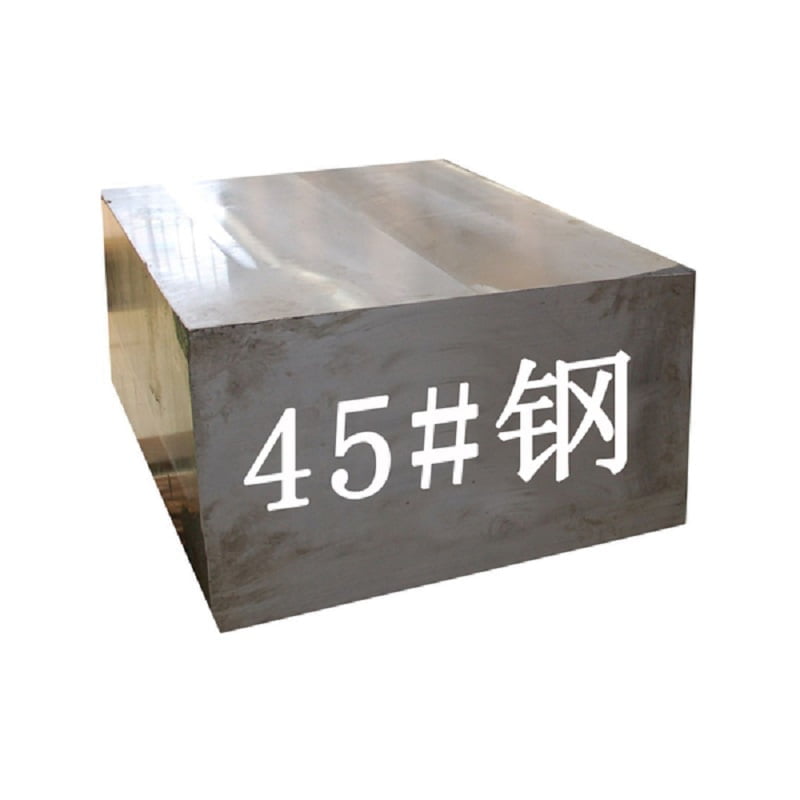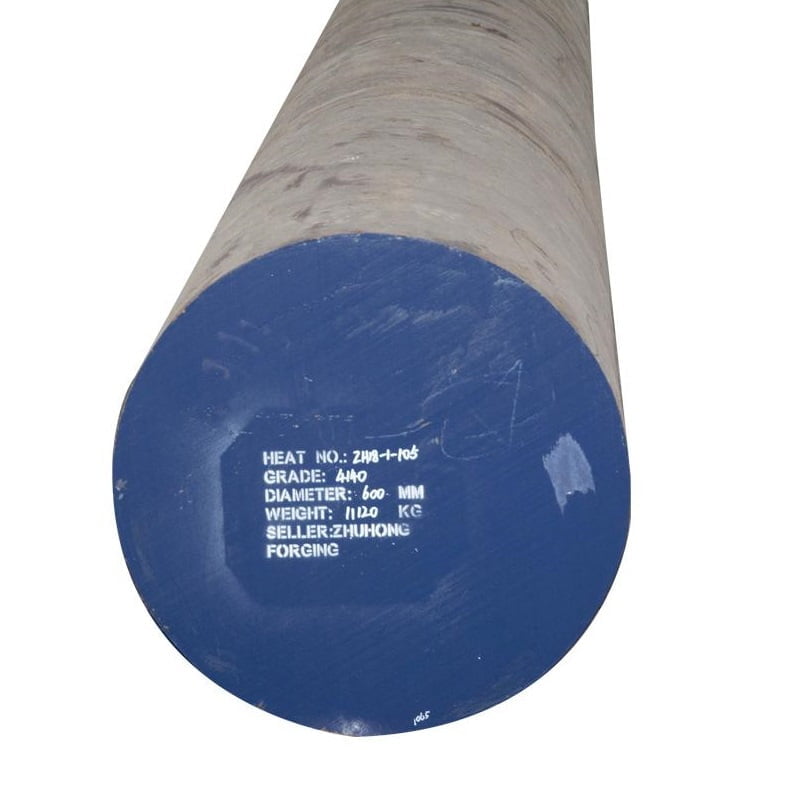
Introducción
S45C y 42CrMo4 son dos grados de acero al carbono y aleado ampliamente utilizados en diversas aplicaciones de ingeniería y fabricación. Este artículo proporciona una comparación exhaustiva de estos dos materiales, centrándose en sus composiciones químicas, propiedades mecánicas, respuestas al tratamiento térmico, aplicaciones y sus respectivas ventajas y desventajas.
Composición química
La composición química tanto del S45C como del 42CrMo4 es vital para determinar sus propiedades mecánicas y su rendimiento general.
| Elemento | Composición de S45C (%) | Composición de 42CrMo4 (%) |
|---|---|---|
| Carbono (C) | 00,42% – 0,48% | 00,38% – 0,45% |
| Manganeso (Mn) | 00,60% – 0,90% | 00,60% – 0,90% |
| Cromo (Cr) | - | 00,90% – 1,20% |
| Molibdeno (Mo) | - | 00,15% – 0,30% |
| Fósforo (P) | 00,03% máx. | 00,03% máx. |
| Azufre (S) | 00,03% máx. | 00,03% máx. |
Explicación de la composición química.

- Carbono (C): S45C tiene un contenido de carbono ligeramente mayor que 42CrMo4, contribuyendo a sus propiedades. Un mayor contenido de carbono normalmente mejora la dureza y la resistencia.
- Cromo (Cr) y Molibdeno (Mo): 42CrMo4 contiene cromo y molibdeno, que mejoran la dureza, la resistencia a la corrosión y la tenacidad, lo que lo hace adecuado para aplicaciones dinámicas y de alto estrés.
- Manganeso (Mn): Ambos grados tienen un contenido de manganeso similar, lo que ayuda a la desoxidación y mejora la templabilidad.
Propiedades mecánicas
Las propiedades mecánicas desempeñan un papel fundamental a la hora de determinar el rendimiento bajo carga y tensión.
| Propiedad | S45C | 42CrMo4 |
|---|---|---|
| Límite elástico (MPa) | Aproximadamente 355 MPa | Aproximadamente 600 – 800 MPa |
| Resistencia a la tracción (MPa) | 570 – 700MPa | 700 – 900 MPa |
| Elongación (%) | 14% (mínimo) | 12% (mínimo) |
| Dureza (HB) | 170 – 210 HB | 250 – 300 HB |
Explicación detallada de las propiedades mecánicas.
- Fuerza de producción: 42CrMo4 tiene un límite elástico significativamente mayor que el S45C, lo que lo hace más adecuado para aplicaciones de alto estrés.
- Fuerza de Tensión: De manera similar, la resistencia a la tracción del 42CrMo4 supera a la del S45C, lo que indica una mejor capacidad de carga.
- Alargamiento: El S45C tiene mejores propiedades de alargamiento, lo que le permite sufrir una mayor deformación plástica en comparación con el 42CrMo4.
- Dureza: El 42CrMo4 es generalmente más duro que el S45C, lo que contribuye a su resistencia al desgaste y durabilidad.
Respuestas al tratamiento térmico
El proceso de tratamiento térmico puede influir en las propiedades mecánicas de ambos grados.
| Tipo de tratamiento térmico | S45C | 42CrMo4 |
|---|---|---|
| Temple | Adecuado para endurecer | Adecuado para endurecer |
| Templado | Reduce la fragilidad manteniendo la fuerza. | Mejora la tenacidad al tiempo que mejora la dureza. |
Explicación del tratamiento térmico
- Temple: Ambos materiales se pueden templar para aumentar la dureza, pero el 42CrMo4 tiende a alcanzar una mayor dureza debido a sus elementos de aleación.
- Templado: El templado es esencial después del enfriamiento para aliviar las tensiones. Ambos materiales se benefician del templado, y el 42CrMo4 mejora la tenacidad y conserva la dureza.
Aplicaciones
S45C y 42CrMo4 se utilizan en una variedad de aplicaciones según sus propiedades.
| Solicitud | S45C | 42CrMo4 |
|---|---|---|
| Engranajes | de uso común | Utilizado en engranajes de alta tensión. |
| Ejes | Adecuado para uso general | Ejes de alto rendimiento |
| Piezas de la máquina | Piezas de ingeniería general. | Componentes críticos que requieren alta resistencia |
| Instrumentos | No se usa comúnmente | Aplicable para herramientas de corte y troqueles. |
| Componentes automotrices | A menudo usado | Comúnmente utilizado en ejes y cigüeñales. |
Explicación de Aplicaciones
- S45C: Su buena maquinabilidad y propiedades equilibradas lo hacen apropiado para aplicaciones de ingeniería general.
- 42CrMo4: Los elementos de aleación y la alta resistencia lo hacen adecuado para aplicaciones dinámicas, incluidas piezas de automóviles donde la durabilidad es esencial.
Ventajas y desventajas
Tanto el S45C como el 42CrMo4 tienen sus ventajas y desventajas específicas.
| Aspecto | S45C | 42CrMo4 |
|---|---|---|
| Ventajas | – Buena maquinabilidad | – Mayor resistencia y dureza |
| – Rentable para aplicaciones generales | – Excelente tenacidad y resistencia a la fatiga | |
| – Propiedades equilibradas | – Adecuado para entornos de alto estrés | |
| Desventajas | – Menor resistencia en comparación con 42CrMo4 | – Mayor coste en comparación con el S45C |
| – Dureza limitada | – Más difícil de mecanizar |
Explicación detallada de ventajas y desventajas
- Ventajas del S45C: Su buena maquinabilidad y rentabilidad lo hacen adecuado para diversas aplicaciones de ingeniería.
- Desventajas del S45C: La menor resistencia y dureza pueden limitar su eficacia en aplicaciones de alto estrés.
- Ventajas del 42CrMo4: La fuerza, tenacidad y resistencia a la fatiga mejoradas lo hacen ideal para aplicaciones exigentes.
- Desventajas del 42CrMo4: El aumento de la dureza puede complicar los procesos de mecanizado y su coste es mayor en comparación con el S45C.
Conclusión
La elección entre S45C y 42CrMo4 depende de los requisitos específicos de la aplicación. El S45C es apropiado para uso general en ingeniería, ya que ofrece un equilibrio entre resistencia y maquinabilidad, mientras que el 42CrMo4 se prefiere por su alta resistencia, tenacidad e idoneidad en aplicaciones dinámicas. Comprender sus diferencias en composición química, propiedades mecánicas, respuestas al tratamiento térmico y aplicaciones ayudará a los ingenieros y fabricantes a realizar selecciones de materiales informadas y adaptadas a las necesidades de sus proyectos.
